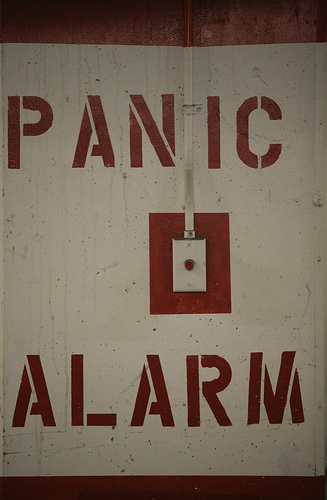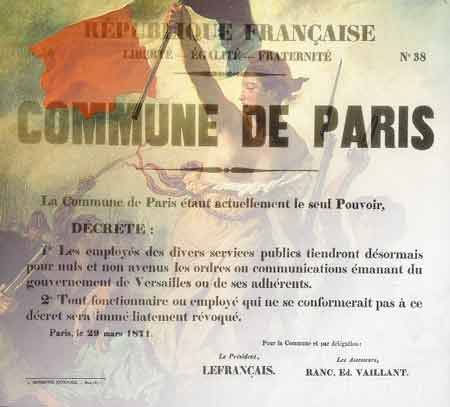Apropos of the continuing thread here aka “Whither journalism” aka “Let’s all run around in circles and scream” … 
This week, there have been a number of really meaty, interesting articles & posts about the emerging model&shape of What Comes Next. It’s some pretty big stuff to wrap your head around, but an interesting structure for the future of professional media is starting to emerge from the chaos.
First, the foundation – why do we even need journalists, or what they essentially do, at all? Here’s a bit, explaining how even the vaunted multitasking abilities of the cyberyouth are crumbling before the relentless onslaught of all the information blasting at us, 24/7/365, wherever we go.
Meanwhile, the massive increase in information production and the
negligible cost of distributing and storing information online have
caused it to lose value. Eli Noam, director of the Columbia Institute
for Tele-Information, explains that this price deflation is only partly
offset by an increase in demand in the digital age, since the time we
have to consume information is finite. “On the whole—on the per-minute,
per-line, per-word basis—information has continuously declined in
price,†says Noam. “The deflation makes it very difficult for many
companies to stay in business for a long time.â€Thus, we come to the heart of journalism’s challenge in an attention
economy: in order to preserve their vital public-service function—not
to mention survive—news organizations need to reevaluate their role in
the information landscape and reinvent themselves to better serve their
consumers. They need to raise the value of the information they
present, rather than diminish it. As it stands now, they often do the
opposite.
So – thinking in a deconstructionist manner, this gets to the heart of what a journalist is: a filter.
Ex: A reporter goes to a City Council meeting, sits there for six hours, soaking up all that’s said & done. That’s information uptake.
The reporter correlate all that to his internal memory of what’s happened before, who the players are, and what their motivations are. That’s adding context.
The reporter then goes back to the office (or, if she’s a MoJo, to her battered car in the parking lot, where her laptop is draining her Sears Die-Hard battery through the cigarette lighter), and writes a story. Said story, in traditional inverted-pyramid fashion, starts with a paragraph that explains in a single sentence, the most important and interesting fact to come out of the night’s festivities.
And that’s filtration.
If you’ve ever dredged through a “slush pile” of unsolicited material, or fast-forwarded through a long amateur tape to find the moment when Aunt Kizzy punches Uncle Slorvin in the trachea … well, you know the essential difference between amateur-level content, and what most people would consider “professional.”
Amateurs tell stories in long, boring, circuitous ways, with frequent stopoffs & asides. Most of the time, by the time you get to the end, you are praying for a relatively quick & painless death, because you’ve come to realize that there is no point to the story. Or you got the point within the first 15 seconds, and the subsequent 45 minutes are a waste of your span on this planet that you will never get back.
Continuing on.
Poynter’s Paul Bradshaw writes about how the action of committing journalism and why some behaviors of journalists occur in the ways that they do. Basically, he looks at a journalist the same way that a business analyst looks at a corporation … or a biologist looks at a simple single-cell organism. (Not a slime mold. That would be the legal profession.)
Anyway – Bradshaw looks at the behaviors exhibited by journalists and tries to track them back to discover the hidden incentives & disincentives that cause such things as “pack journalism” and why Fox News drops everything to focus on the latest missing blonde girl.
“Journalists can be described as rational actors seeking to promote
their own interests, reacting to material and non-material incentives
and rewards, calculating risks and benefits,” they wrote. “They seek to
maximize attention for their work, they try to minimize costs of
investigation and research, to use their sources to their greatest
professional benefit, and so forth.”For example, “pack journalism” can be considered a type of “free riding,” and thus the
tragedy of the commons: “hot news” (such as the Lewinsky story) gets
overused. James Hamilton wrote about this phenomenon in All the News that’s Fit to Sell:
“The fixed costs of learning … tips the balance in story selection
toward continuous coverage of a given event rather than undertaking new
investigations.”
If, at some level, we’re already acting like self-contained corporations, how much of a leap is it to the “Everyone is a Permanent Freelance r” future?
r” future?
Well, quite a lot, actually.
It’s nice for left-leaning academic types to puff on their metaphorical pipes and talk about some idealized future where journalism is committed by a self-organizing information collective … whiffs of the utopian thinking of Paris’ communards permeate this vision … somehow, mankind (or at least the learned journalistic revolutionary vanguard) is going to at last free itself from the Murdochian chains and all work together, each according to his measure, to produce the kind of useful, relevant information that will enlighten the public & save us all from the tentacles of authoritarian government.
Back in the really real world, E&P reported today that “several cities” could have no daily paper within a year.
And my long experience in a variety of newsrooms leaves me with something stronger than a suspicion that hoping that a group of cynical, angry journalists, desperate because they’ve seen any hope of drawing a steady paycheck, are not the most fertile ground for a spontaneous flowering of philanthropic self-sacrifice for the greater common good.
Still, if the future does look like this “Cloud Journalism,” where each reporter is a trusted voice in his/her community, who has aggregated an audience of listeners/deputies, and who acts as an information filter/clearinghouse … well, we’re going to need a vision of what behavioral rules (beyond page traffic meters & checks from AdSense) should be adhered to.
I kinda like this list from Jim Lehrer, one of the silverback Grand Old Men of Journalism. After he won an award, he talked about the enduring rules that all who hope to commit journalism should keep in mind:
“Do nothing I cannot defend.
“Cover, write and present every story with the care I would want if the story were about me.
“Assume there is at least one other side or version to every story.
“Assume the viewer is as smart and caring and good a person as I am.
“Assume the same about all people on whom I report.
“Assume personal lives are a private matter until a legitimate turn in the story absolutely mandates otherwise.
“Carefully separate opinion and analysis from straight news stories, and clear label everything.
“Do not use anonymous sources or blind quotes except on rare and
monumental occasions. No one should ever be allowed to attack another
anonymously.“And finally, I am not in the entertainment business.”
Technorati Tags: Cloud Journalism, newspaper crisis, new media
